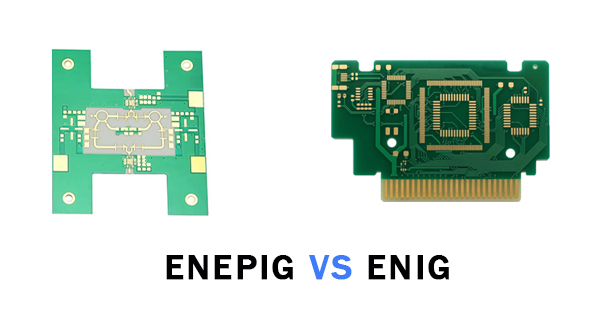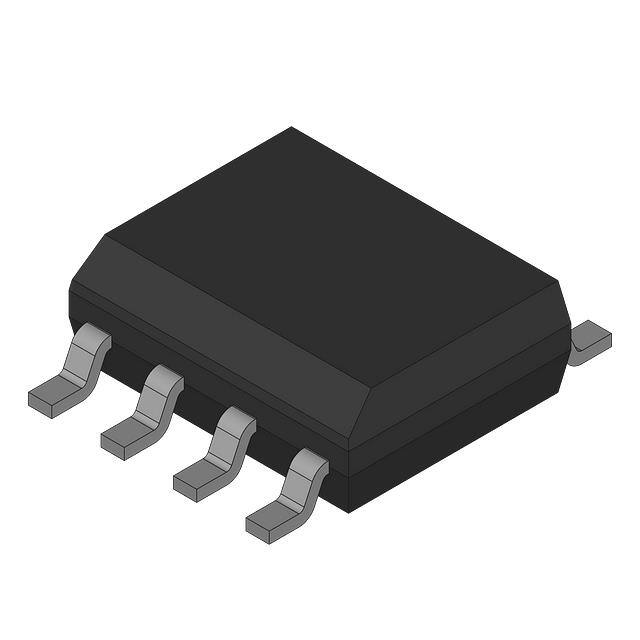ENIG vs ENEPIG PCB: Explore the Difference
ENIG (Electroless Nickel Immersion Gold) and ENEPIG (Electroless Nickel Electroless Palladium Immersion Gold) are both common printed circuit board (PCB) surface treatment processes. They are both used to provide good soldering performance, corrosion resistance and reliability, but they differ in certain applications and requirements.

What is ENIG (Electroless Nickel Immersion Gold)
ENIG is a common surface treatment process involving two layers of metal coating:
Nickel layer: formed by chemical nickel plating process, the main purpose is to provide a solid metal layer to ensure good solderability and prevent copper layer oxidation.
Immersion gold layer: A thin layer of gold is covered on the nickel layer, usually with a thickness of about 0.03 microns. This layer of gold can protect the nickel layer from oxidation and improve solderability.
What is ENEPIG (Electroless Nickel Electroless Palladium Immersion Gold)
ENEPIG is an improved version of the surface treatment process involving three layers of metal coating:
Nickel layer: Like ENIG, nickel is plated first.
Palladium layer: A layer of palladium is plated on the nickel layer. This palladium layer can improve weldability, corrosion resistance and oxidation resistance.
Immersion Gold: Finally, a thin gold layer is applied to prevent the palladium layer from oxidizing and improve welding reliability.
ENIG vs ENEPIG: A Comparative Analysis
| Features | ENIG (Electroless Nickel Immersion Gold) | ENEPIG (Electroless Nickel Electroless Palladium Immersion Gold) |
|---|---|---|
| Metal coating layers | Nickel layer + immersion gold layer | Nickel layer + palladium layer + immersion gold layer |
| Oxidation resistance | Weak (vulnerable to moisture and oxidation) | Strong (palladium layer provides additional protection) |
| Welding performance | Excellent, but the gold layer may wear | Better, the palladium layer improves welding reliability |
| Corrosion resistance | Good | Better, the palladium layer increases corrosion resistance |
| Applicable scenarios | Ordinary consumer electronics, computer hardware, automotive electronics, etc. | High-end electronics, automotive electronics, aerospace, medical equipment and other fields with high reliability requirements |
| Cost | Low | High, because palladium is expensive |
| Production process | Simple, suitable for large-scale production | More complex, requires more process steps |
| “Black gold” problem | Yes (if the gold layer is not properly treated) | No, because the palladium layer can prevent the gold layer from reacting with the nickel layer |
1. Layer Configuration
ENEPIG: This finish consists of three layers: a nickel base layer, a palladium layer, and a gold top layer. The palladium acts as a barrier between the nickel and gold layers.
ENIG: ENIG also includes two layers on a copper substrate, but only nickel and gold. ENEPIG does not have a palladium layer.
2. Corrosion resistance, reliability
ENIG: ENIG has excellent corrosion resistance, but is susceptible to black pad syndrome due to direct contact between the nickel and gold layers.
ENEPIG: ENEPIG's palladium layer provides additional protection against corrosion, especially black pad syndrome, a defect that occurs in ENIG finishes. This makes ENEPIG more reliable for long-term use.
3. Wire bonding capability
ENIG: ENIG is generally suitable for soldering, but is not recommended for wire bonding because the gold layer may become brittle.
ENEPIG: ENEPIG is versatile and suitable for both soldering and wire bonding. This makes it ideal for complex, high-reliability applications.
4. Cost considerations
ENIG: ENIG is generally less expensive than ENEPIG and is a cost-effective choice for standard PCB applications.
ENEPIG: The addition of a palladium layer to ENEPIG may make it more expensive than ENIG. However, the increase in reliability can justify the cost in high-reliability applications.
5. Application Suitability
ENIG: Ideal for general PCB applications where only soldering is required. Widely used due to its good solderability and flat surface.
ENEPIG: Ideal for complex, high-density boards where reliability is critical. Compatible with soldering and wire bonding, making it suitable for a wide range of electronic applications.
ENIG VS ENEPIG:Making the Right Choice
ENIG is suitable for most general electronic applications, with low cost and sufficient performance to meet general needs, but may face gold layer wear and "black gold" problems in demanding environments.
ENEPIG provides higher oxidation resistance, welding performance and reliability, and is particularly suitable for applications that require higher quality standards, such as automotive electronics, medical devices, aerospace, etc., but at a higher cost.
Choosing between ENEPIG and ENIG depends largely on the specific requirements of your PCB application. If you need a finish that offers exceptional wire bonding capabilities, corrosion resistance, and durability for high-reliability applications, ENEPIG is the way to go. However, for standard applications where cost is a significant factor, and solderability is the primary concern, ENIG presents a more feasible option.
Remember, the right surface finish not only enhances the performance of your PCB but also extends its lifespan, ensuring reliability and efficiency in your electronic applications.
Which process to choose depends on the specific requirements of the application, including budget, performance requirements and reliability requirements.


